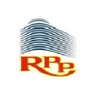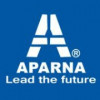Site Engineer
900+ Site Engineer Interview Questions and Answers

Asked in RPP Infra Projects

Q. 1.BBS calculation of slab? 2.Stairs case riser and tread dimension? 3.Types of cement? 4.Full form of tmt, pcc, rcc, tmx, dpc 5.Definition of plinth area, courtyard area, built-up area? 6.function of dpc 8.stan...
read moreSample interview questions for Site Engineer position
BBS calculation of slab involves calculating the number of steel bars required for the slab based on the design specifications
Staircase riser and tread dimensions are determined based on the height of the floor and the desired slope of the staircase
Types of cement include Ordinary Portland Cement, Rapid Hardening Cement, and Sulphate Resisting Cement
Full form of TMT is Thermo-Mechanically Treated, PCC is Plain Cement Concre...read more

Asked in Hindustan Construction Company

Q. What is the definition of rolling margin in the context of steel?
Rolling margin is the difference between the actual thickness and the minimum thickness of a steel plate.
Rolling margin is a term used in the steel industry to measure the thickness of a steel plate.
It is the difference between the actual thickness and the minimum thickness of the plate.
The rolling margin is important because it affects the strength and durability of the steel.
For example, if the rolling margin is too small, the steel may be weaker and more prone to failure.
O...read more
Site Engineer Interview Questions and Answers for Freshers

Asked in Adani Group

Q. Which type of pipeline and standards do you follow?
The type of pipe line and its standards depend on the specific project requirements and industry standards.
The type of pipe line can vary based on the material being transported, such as water, gas, oil, etc.
Common types of pipe lines include water supply lines, sewer lines, natural gas lines, oil pipelines, etc.
The standards followed for pipe lines depend on the country, industry, and specific project requirements.
Some commonly followed pipe line standards include ASTM (Amer...read more
Asked in Divakar Engineering

Q. design? 1.what is ASD in steel design? 2.what is special consideration in steel structure? 3. What is objective of design in steel structure ?4which what is code is used for steel structure? 5. What are structu...
read moreAnswers to questions related to steel structure design and codes.
ASD stands for Allowable Stress Design in steel design.
Special considerations in steel structure include fire resistance, corrosion protection, and seismic design.
The objective of design in steel structure is to ensure safety, functionality, and economy.
The code used for steel structure design varies by country, such as AISC in the US and Eurocode in Europe.
Structural steel members include beams, columns, trusse...read more
Asked in JW CONSULTANTS LLP

Q. What is the lapping zone of beam rebar at top and bottom...? Why do we provide bent up bars in slab ? What is the lapping zone of column reinforcement ? And why it is provided in that zone ? Why we bend the bea...
read moreExplaining the lapping zone of beam and column reinforcement, and the purpose of bent up bars and stirrup hooks in slab and beam respectively.
The lapping zone of beam rebar at top and bottom is the area where the two bars overlap to provide continuity and strength.
Bent up bars are provided in slab to resist the shear force and prevent cracking.
The lapping zone of column reinforcement is the area where the bars overlap to provide continuity and strength.
Stirrup hooks are bent ...read more

Asked in Aparna Constructions and Estates

Q. Why are bricks wetted during brickwork?
Bricks are wet during brick work to prevent them from absorbing water from the mortar too quickly.
Wet bricks prevent the mortar from drying out too quickly, which can weaken the bond between the bricks and the mortar.
Wet bricks also help to prevent efflorescence, a white powdery substance that can form on the surface of bricks due to the migration of salts.
Bricks should be dampened, not soaked, before use.
The amount of water used to wet the bricks should be carefully controll...read more
Site Engineer Jobs



Asked in Sthapatya Consultants

Q. How do you calculate steel quantity?
Steel quantity can be calculated by multiplying the volume of steel by its density.
Calculate the volume of steel required for the project
Determine the density of the specific type of steel being used
Multiply the volume by the density to obtain the steel quantity
Consider any wastage or additional steel required for reinforcement
Example: To calculate steel quantity for a column, multiply the cross-sectional area of the column by its height and the density of steel

Asked in Kalpataru Projects International

Q. How do you check column beam reinforcement and slab design on site?
To check column beam reinforcement and slab design on site, follow these steps:
Review the structural drawings and specifications to understand the design requirements
Inspect the reinforcement bars for proper placement, size, and spacing
Check the concrete cover thickness to ensure it meets the design requirements
Verify the alignment and verticality of columns and beams using plumb bobs or laser levels
Measure the dimensions of the slab to confirm it matches the design
Check for ...read more
Share interview questions and help millions of jobseekers 🌟

Asked in Divakar Engineering

Q. 1.what do you mean by steel structure design? 2.what are the steel of structure design? 3.what are the three design methods?4.fer steel structure? 5.which objective of in steel structure
Steel structure design involves the planning and creation of steel-based frameworks for buildings and other structures.
Steel structure design refers to the process of creating frameworks for buildings and other structures using steel.
The steel used in structure design can vary in type and quality depending on the specific needs of the project.
There are three main design methods used in steel structure design: ASD (Allowable Stress Design), LRFD (Load and Resistance Factor Des...read more

Asked in Nagarjuna Construction Company

Q. What is the ratio of M25 concrete you have used in your project?
The ratio of M 25 used in the project is 1:1:2.
The ratio of M 25 concrete is 1 part cement, 1 part fine aggregates, and 2 parts coarse aggregates.
This ratio ensures the desired strength and durability of the concrete mix.
For example, if we need to prepare 1 cubic meter of M 25 concrete, we would use 350 kg of cement, 350 kg of fine aggregates, and 700 kg of coarse aggregates.

Asked in Nandivardhan Group

Q. 1)tell me 5 nos of IS code. 2)floor drop. 3) Gypsum activity procedure. 4)gypsum area consumption,density. 5) waterproofing procedure. 6)which area comes in toilet bath. 7)Is code for BBS. 8)kitchen platform si...
read moreA Site Engineer interview with questions on IS codes, floor drop, gypsum activity, waterproofing, kitchen platform size, safety measures, and more.
IS codes: IS 456, IS 800, IS 1200, IS 383, IS 10262
Floor drop: The difference in height between two adjacent floors
Gypsum activity procedure: Mixing gypsum powder with water to form a paste and applying it to the surface
Waterproofing procedure: Applying a waterproofing membrane or coating to prevent water penetration
Kitchen platfor...read more
Asked in Construction Group

Q. What is the thickness and size of compreg ply?
The thickness of compreg ply varies depending on its intended use and application. Its size can also vary depending on the manufacturer and customer requirements.
The thickness of compreg ply can range from 3mm to 25mm or more
The size of compreg ply can vary from 4ft x 8ft to 5ft x 10ft or more
The thickness and size of compreg ply can be customized based on the specific requirements of the project
Compreg ply is commonly used in construction, furniture making, and other applica...read more

Asked in L&T Construction

Q. 1.) Slump test procedure 2) Tbm 3) how to calculate the wt of steel 4) about site supervision Dpr Dwr And BBS of structure 5) how to calculate concrete quantity of container wall 6) about pipe line
Questions related to site engineering including slump test, TBM, steel weight calculation, site supervision, BBS, concrete quantity calculation, and pipeline.
Slump test measures the consistency of concrete. Procedure involves filling a slump cone with concrete and measuring the slump after removing the cone.
TBM stands for Tunnel Boring Machine, used for excavating tunnels in soil or rock.
Weight of steel can be calculated using the formula: weight = (d^2/162) x L, where d is d...read more

Asked in Shimizu

Q. What is a bar bending schedule?
A Bar Bending Schedule details the specifications for cutting and bending rebar in concrete structures.
Includes sizes, shapes, and quantities of rebar needed for construction.
Facilitates accurate fabrication and placement of rebar.
Helps in estimating material costs and quantities.
Example: A BBS may specify 10mm diameter bars bent at 90 degrees for a beam.
Ensures compliance with structural design and safety standards.
Asked in Raj Trimurti Infraproject

Q. Beam & Column BBS. How to calculate Column,Beam & slab shuttering area, Reinf & Shuttering checking procedure. How do u provide lap in beam, col , Slab as per IS code. What is the minimum deshuttering time as p...
read moreUnderstanding BBS, shuttering area calculations, lap lengths, deshuttering times, rolling margins, and bend tests as per IS codes.
Calculate shuttering area: For beams, use length x depth; for columns, use perimeter x height; for slabs, use length x width.
Reinforcement detailing: Use BBS (Bar Bending Schedule) to specify lengths, diameters, and lap lengths for bars.
Lap length: Minimum lap length for tension bars is 50 times the diameter; for compression bars, it's 40 times the...read more

Asked in Ramky Infrastructure

Q. What are some of the biggest challenges civil engineers face?
Civil engineers face challenges such as managing project budgets, dealing with environmental concerns, and ensuring structural integrity.
Managing project budgets and ensuring cost-effective solutions
Dealing with environmental concerns and implementing sustainable practices
Ensuring structural integrity and safety of buildings and infrastructure
Managing complex construction schedules and coordinating multiple stakeholders
Adapting to changing regulations and codes
Addressing comm...read more

Asked in Hindustan Construction Company

Q. How much density of material Steel Concrete Sand
Density of materials: Steel - 7850 kg/m3, Concrete - 2400 kg/m3, Sand - 1600 kg/m3
Density of steel is higher than that of concrete and sand
Density of concrete varies depending on the mix design
Density of sand can vary depending on the source and moisture content

Asked in Navayuga Engineering Company

Q. What isM20,What are the types of steel,Harbour topics etc
M20 is a grade of concrete used in construction. Steel types include mild steel, high tensile steel, and stainless steel. Harbour topics may include dredging, breakwaters, and port design.
M20 is a mix of concrete with a compressive strength of 20 MPa
Mild steel is commonly used in construction for reinforcement
High tensile steel has a higher strength and is used in structures with greater stress
Stainless steel is corrosion-resistant and used in environments with high moisture ...read more
Asked in Divakar Engineering

Q. 1.what is the minimum thickness of gusset plate?2.what do you mean by steel structure design? 3.fer steel structure? 4.what is asd in steel design?
Answers to questions related to Site Engineer job interview.
The minimum thickness of gusset plate depends on the load it needs to bear and the material used.
Steel structure design involves the analysis and design of steel structures to ensure their safety and stability.
FER steel structure is a type of steel structure that uses Fiber Reinforced Polymer (FRP) composites for reinforcement.
ASD in steel design stands for Allowable Stress Design, which is a design method that uses ...read more
Asked in Shiv Construction

Q. How do you determine the per-metric weight of 25mm reinforcement?
The permetric weight of 25mm reinforcement can be found using the formula: weight = (d^2/162) * L, where d is the diameter and L is the length.
Calculate the square of the diameter of the reinforcement (25mm * 25mm = 625mm^2)
Divide the square by 162 (625mm^2 / 162 = 3.858mm)
Multiply the result by the length of the reinforcement to get the permetric weight

Asked in Fidesto Projects

Q. What do you do if concrete becomes too hard before placement? Do you add extra water?
No, adding extra water to hardened concrete will weaken the structure and compromise its integrity.
Do not add extra water to hardened concrete as it will weaken the structure
Consult with a supervisor or engineer for guidance on how to proceed
Consider using additives or accelerators to help with placement if necessary

Asked in Aparna Constructions and Estates

Q. What is the required thickness of cement mortar for horizontal and vertical brickwork?
The thickness of cement mortar in brickwork varies depending on the type of brick and the purpose of the wall.
For load-bearing walls, the thickness of the mortar should be 10mm for horizontal joints and 8mm for vertical joints.
For non-load-bearing walls, the thickness of the mortar can be reduced to 6mm for horizontal joints and 4mm for vertical joints.
The type of brick used can also affect the thickness of the mortar. For example, if using hollow bricks, the mortar thickness...read more

Asked in USHA International

Q. What is the charging of an electrode in an electrostatic precipitator (ESP) control in a thermal power plant?
Charging of an electrode in e.s.p control is the process of applying an electric charge to the electrode to attract and collect particulate matter in a thermal power plant.
Charging of an electrode is a crucial step in the operation of an electrostatic precipitator (e.s.p) in a thermal power plant.
The electrode is charged with a high voltage DC power supply, typically ranging from 40,000 to 70,000 volts.
The charged electrode creates an electric field that attracts and collects...read more
Asked in Raj Trimurti Infraproject

Q. Components of Aluform & Conventional Shuttering. What is the procedure of 1st mock up slab. Diff stages of shuttering & deshuttering of Aluform & Conventional Shuttering. Shuttering oil , Grease, binding wire,...
read moreOverview of Aluform and Conventional Shuttering components and procedures for mock-up slab construction.
Aluform components include aluminum panels, connectors, and support props.
Conventional shuttering uses plywood, timber, and steel props.
First mock-up slab involves setting up a sample slab to check alignment and finish.
Stages of shuttering include layout, assembly, and bracing.
Deshuttering stages involve removing props, then panels, ensuring concrete strength.
Shuttering oil...read more

Asked in Indian Oil Corporation

Q. What is the maximum percentage of carbon and silicon used in cement?
The maximum percentage of carbon and silicon in cement is typically around 5% and 3% respectively.
Maximum percentage of carbon in cement is around 5%
Maximum percentage of silicon in cement is around 3%
Higher percentages can affect the quality and properties of the cement
Asked in Surya Contractors

Q. What kind of concrete is used on the wall of MIVAN Shuttering?
Mivan Shuttering walls typically use high-strength concrete with a minimum grade of M25.
High-strength concrete is used for Mivan Shuttering walls
Minimum grade of M25 is recommended
The concrete mix should be designed for easy flow and filling of the shuttering system

Asked in Concorde Group

Q. Paint brand name?? Colour name and code also?? How to check paint?? Putty brand name?? Mixing ratio??
The paint brand name is Asian Paints. The color name is Royale Play Metallics. The code is 9115. The putty brand name is Birla White. The mixing ratio is 2:1.
Paint brand name: Asian Paints
Color name: Royale Play Metallics
Color code: 9115
Putty brand name: Birla White
Mixing ratio: 2:1

Asked in Rahee Group

Q. What is the initial and final setting time of an ideal cement mix?
The initial and final setting time of an ideal cement mix refers to the time it takes for the cement to begin to harden and fully harden, respectively.
The initial setting time is the time it takes for the cement to lose its plasticity and become rigid enough to resist certain pressures.
The final setting time is the time it takes for the cement to fully harden and achieve its maximum strength.
The initial setting time is typically around 30 minutes, while the final setting time...read more

Asked in Hindustan Construction Company

Q. How many bags of cement are in 1 cubic meter?
The amount of cement required for 1 cubic meter varies depending on the concrete mix design.
The amount of cement needed for 1 cubic meter of concrete varies from 250kg to 600kg depending on the mix design.
The mix design specifies the ratio of cement to other materials like sand and aggregates.
For example, a mix design of 1:2:4 requires 400kg of cement per cubic meter of concrete.
It is important to accurately calculate the amount of cement needed to ensure the strength and dur...read more
Asked in Construction Group

Q. How much area does one liter of shuttering oil cover?
The consumption of shuttering oil per liter depends on the area covered.
The consumption of shuttering oil per liter can vary depending on factors such as the type of shuttering material, surface texture, and weather conditions.
On average, 1 liter of shuttering oil can cover approximately 10-15 square meters of surface area.
However, this can vary significantly based on the absorbency of the surface and the thickness of the oil application.
For example, if the surface is highly ...read more
Interview Questions of Similar Designations
Interview Experiences of Popular Companies






Calculate your in-hand salary
Confused about how your in-hand salary is calculated? Enter your annual salary (CTC) and get your in-hand salary


Reviews
Interviews
Salaries
Users










